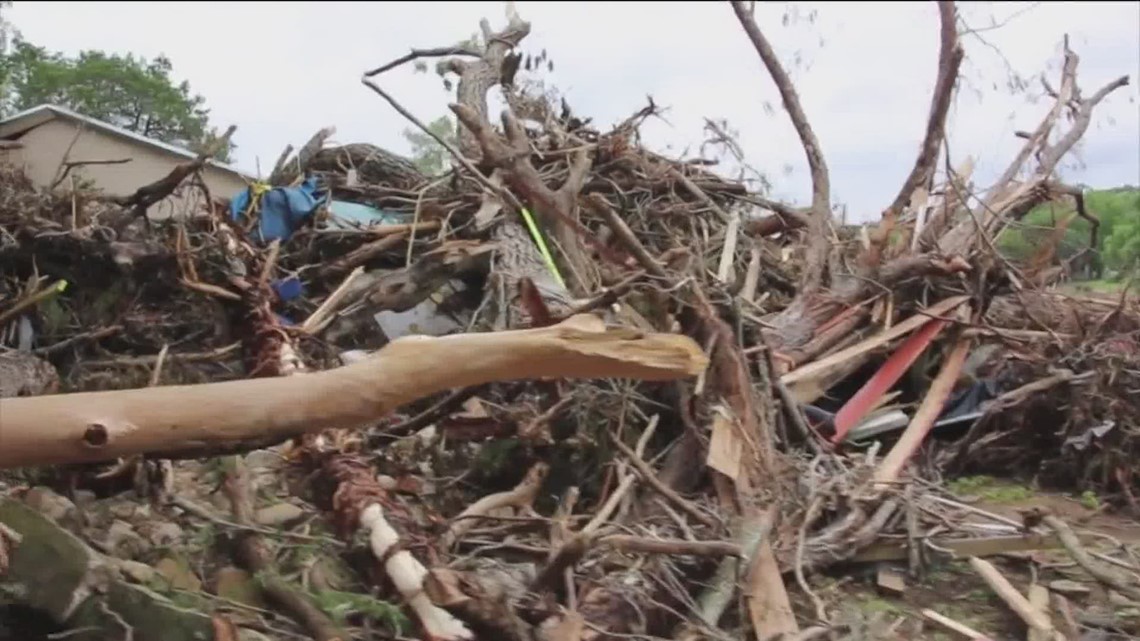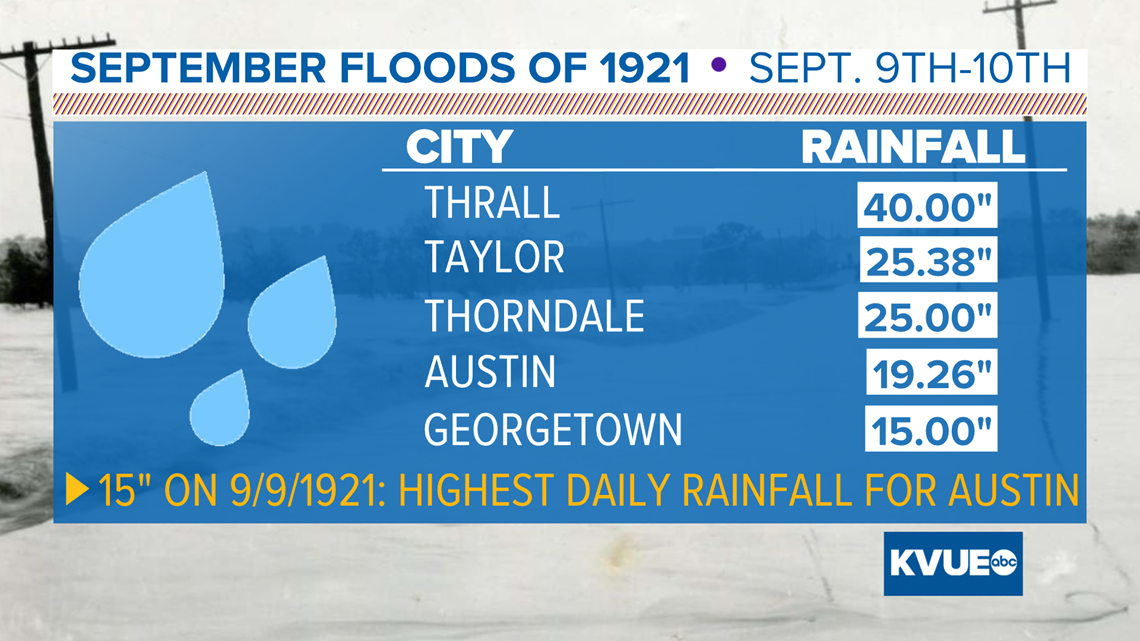- Austin adopts new map that greatly expands area at risk of wildfire
- CenterPoint Energy accelerates infrastructure improvements ahead of hurricane season
- Carolina Hurricanes playoff tickets go on sale Thursday
- Ask the Meteorologist: Why do tornadoes target Tornado Alley, Dixie Alley?
- Nonprofit closes distribution site that aided thousands after Hurricane Helene
Severe weather: The impact flash flooding has on Central Texas

Several historic instances of flash flooding remind Central Texans to “turn around, don’t drown.”
AUSTIN, Texas — Most of the year, Central Texas is no stranger to rain. On average, a little over 35 inches falls in Austin.
May is usually the wettest month of the year, followed by October, then June.
But every now and then, the skies open up and Central Texas turns into “Flash Flood Alley.”
Every few years – whether it’s from severe thunderstorms or from hurricanes that come ashore on the Texas coast and track over Central Texas – flash floods destroy property and sometimes claim lives.
The deadliest flash flood in Austin happened on Memorial Day weekend in 1981, when 13 people died. Ten inches of rain fell in 24 hours, causing creeks to overflow, destroying homes and businesses and causing $36 million in damages.

An even more catastrophic flood struck on Memorial Day weekend 34 years later. In 2015, Hays County suffered the greatest loss of life when 12 people died as a quickly rising Blanco River near Wimberley destroyed everything in its path.


Looking back in the history books, one of the worst floods to strike the area was in 1921. Record floods occurred in Austin, San Antonio and Williamson County, killing 215 people.
During that flood, 23 inches of rain fell in a single day in Taylor, Texas, devastating the city.


Many of the reasons we enjoy living in Central Texas and the Hill Country – from the beauty of the hills and valleys, to the creeks and rivers – are also the reasons that floods can be so devastating.
Water on roads can rise quickly. Nearly 75% of all flood deaths occur in vehicles, as people attempt to drive through low water crossings.
It’s not possible to tell if a flooded low water crossing is safe just by looking at it. Shallow water can be deceptively swift and easily wash a vehicle off the road. That’s why safety experts say: When a low water crossing is flooded, don’t chance it. Turn around, don’t drown!
It’s important advice that could save your life.